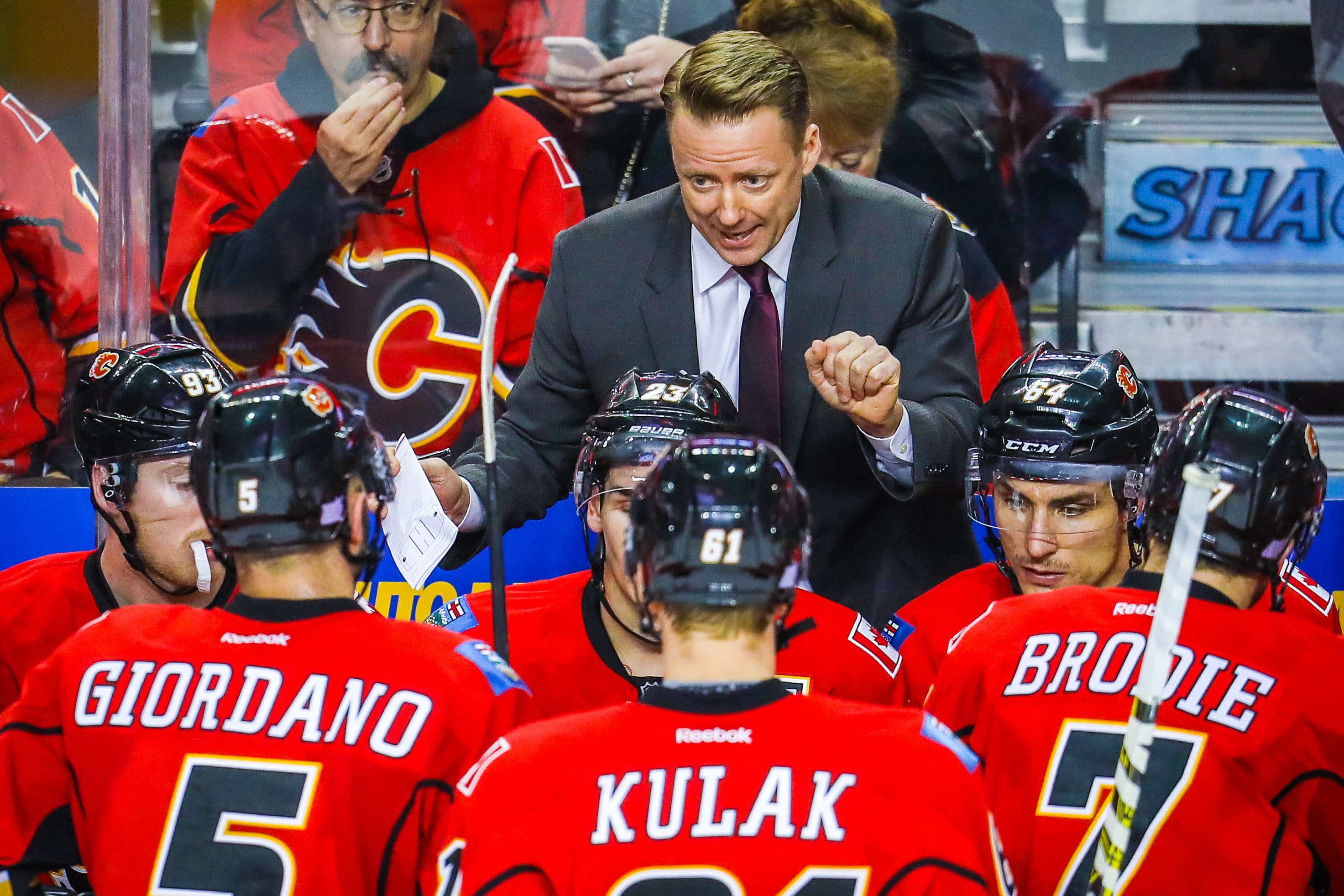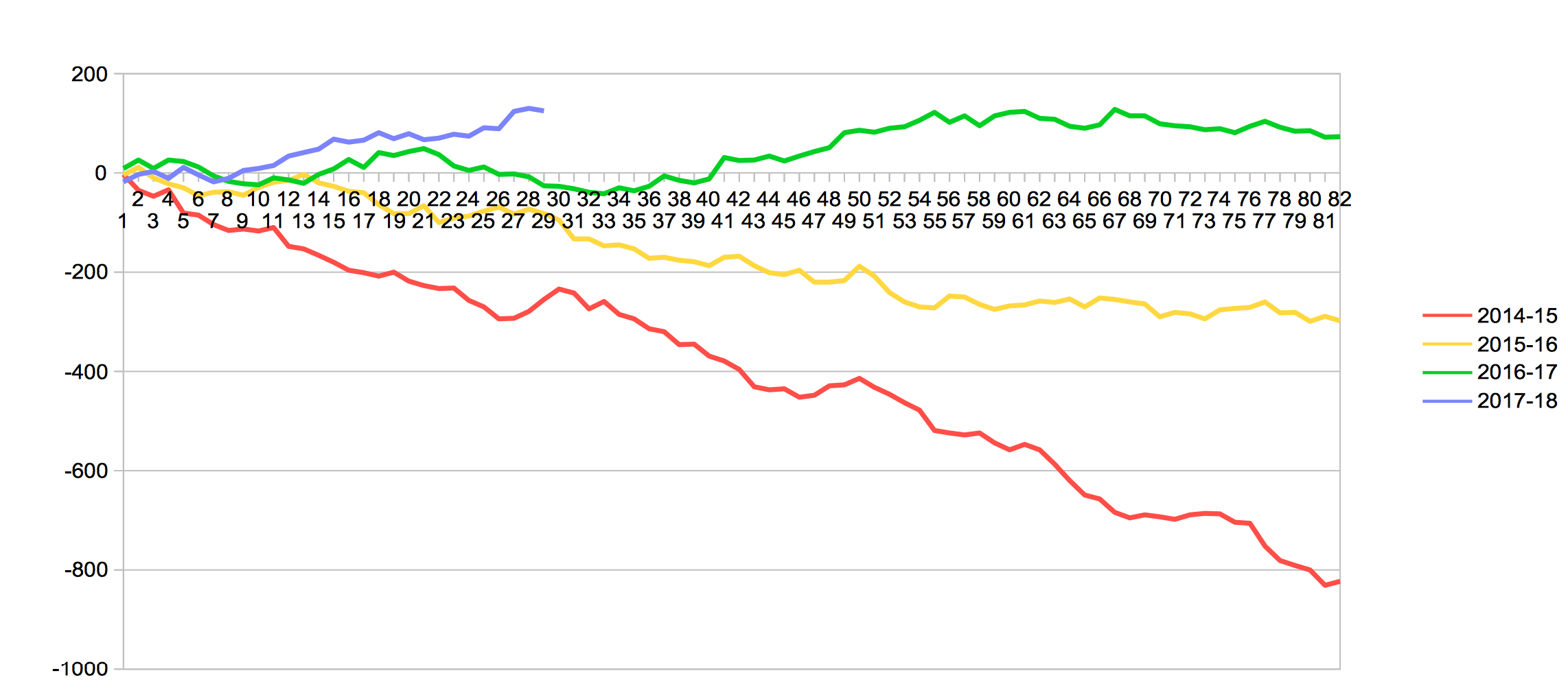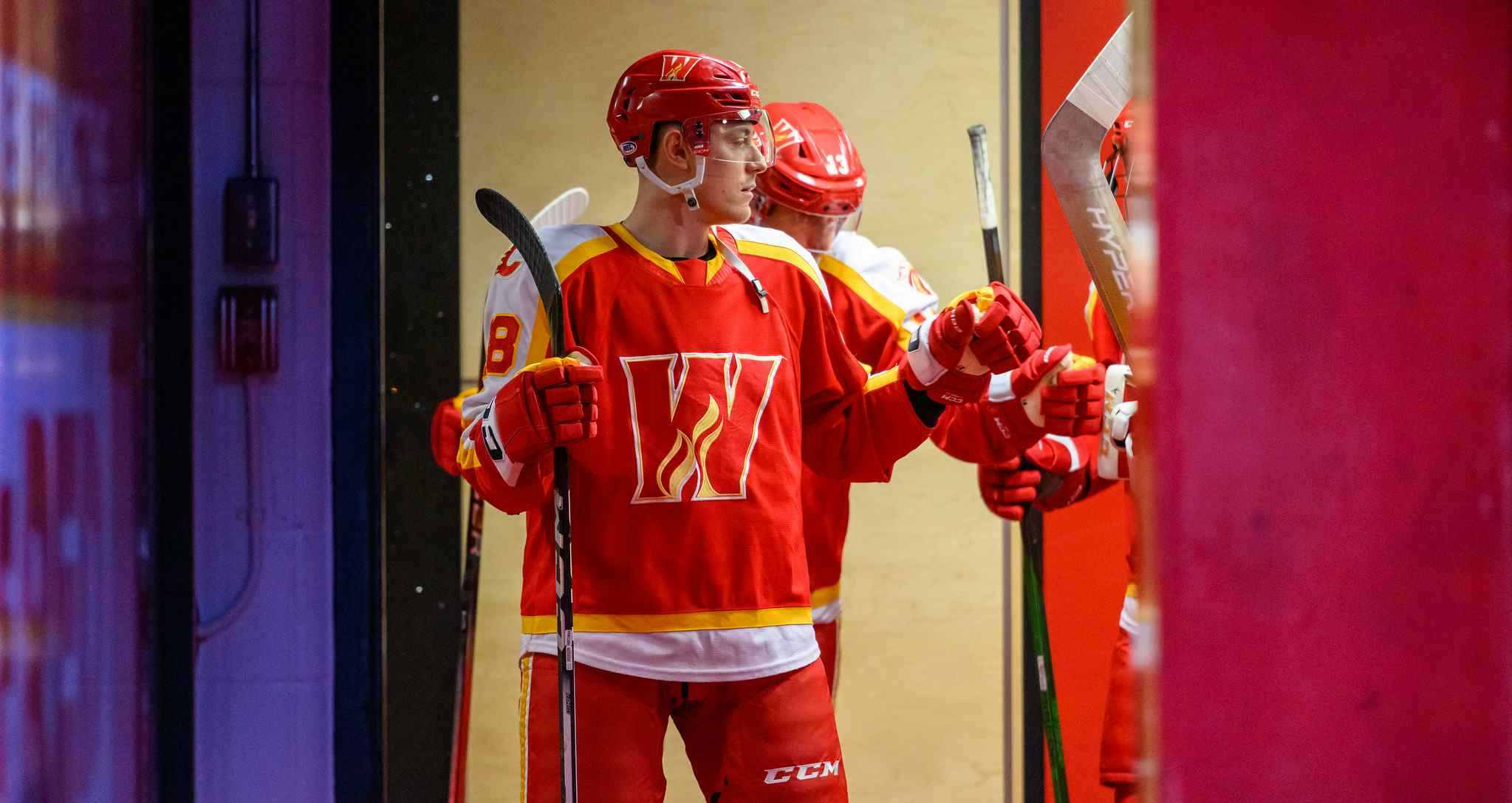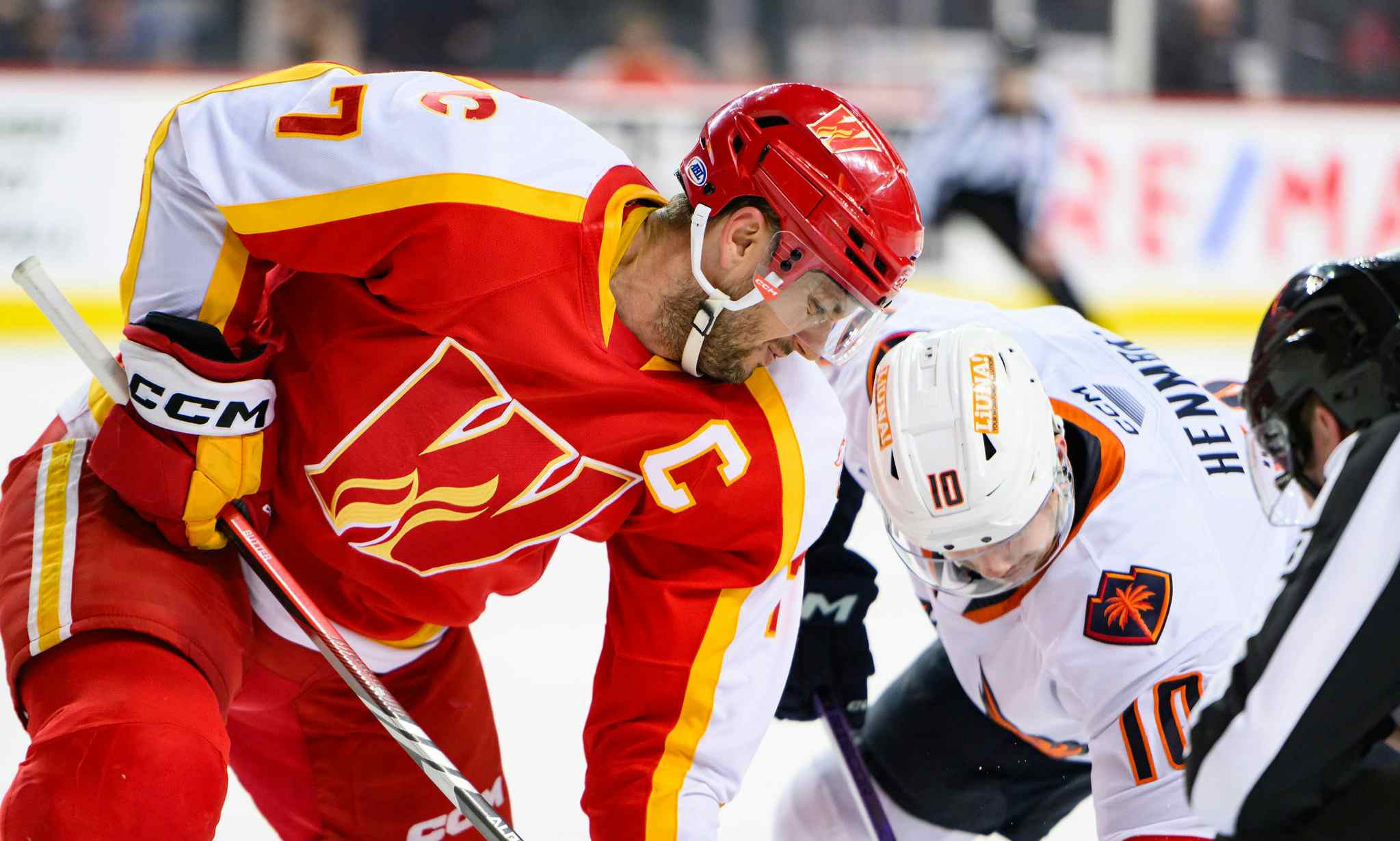The Flames have made progress over the past four seasons

By Ryan Pike
6 years agoThree seasons ago, the Calgary Flames somehow made the Stanley Cup playoffs.
We use the term “somehow” because the Flames were a team that was objectively not very good if you focused on their processes and not their results. They played from behind a lot. They relied upon Herculean comebacks to get back into games. They chased the puck a lot and really struggled at puck possession. They rode hot goaltending and crazy shooting percentages into the playoffs, then crashed and burned the following season as their improvements were cancelled out by their percentages regressing.
But if you look at their underlying numbers – in this case, their Corsi and scoring chance differentials – the Flames have quietly improved by leaps and bounds over the past four seasons.
Corsi differential
Corsi is a pretty basic measure of puck possession. It’s all shots directed at the net, regardless of whether they hit or not. Because that’s a really broad measure, Corsi is generally a good proxy for overall zone time – both on a player and team-wide level.
Here’s a quick snapshot at how the Flames have progressed over the past few seasons, presented in the form of cumulative Corsi differential:

Corsi differentials, 2017-18 through 29 games
2014-15: -823, an average of -10.0 per game [the scary red line]
These Flames were objectively bad, yet somehow made the postseason due to riding some sweet, sweet percentages. If you look at the top 10 Flames by ice time from 2014-15, none of them were in the black in terms of Corsi differential. Kris Russell and Dennis Wideman were both -400 and were second and third on the team in even strength ice time, because the team had some roster construction issues.
2015-16: -298, an average of -3.6 per game [the less scary yellow line]
The 2015-16 Flames didn’t get the bounces that the previous season’s did, but they were a lot better fundamentally. Of the top 10 players in ice time, three of them had positive Corsi differentials: Mark Giordano, Johnny Gaudreau and Mikael Backlund. Deryk Engelland and Russell were the worst possession players among the most-used players, but everyone else in the top 10 in ice time was close to breaking even in their Corsi differential.
Based on Bob Hartley getting fired following the 2015-16 season, it appears that credit for the team’s possession improvements went to the maturing core rather than Hartley’s coaching methods.
2016-17: +73, an average of +0.9 per game [the happy-looking green line]
The first season under Glen Gulutzan saw the Flames wobble around the break even mark in terms of their Corsi differential for roughly two-thirds of the season before finishing strong. Of the 10 most-used players, seven had positive differentials (Giordano, Dougie Hamilton, Sean Monahan, Michael Frolik, Gaudreau, Backlund and Wideman) while three remained in the red (T.J. Brodie, Engelland and Sam Bennett).
2017-18: +125 (so far), an average of +4.3 per game [the blue line]
So far, the Flames have largely continued doing what they did at the end of 2016-17 in the current season. They’re on pace for a +353 Corsi differential, which would be another big improvement from this group. Of the most-used players, seven enjoy positive differentials (Giordano, Hamilton, Gaudreau, Frolik, Monahan, Backlund and Matthew Tkachuk), while three remain in the red (Brodie, Travis Hamonic and Michael Stone).
Scoring chance differential
Scoring chances are, essentially, meaningful expressions of puck possession – what you do with the puck once you have it. They’re shots at the net from the “home plate” area. Scoring chances have been a point of emphasis from head coach Glen Gulutzan, especially early this season.

Scoring chance differentials, 2017-18 through 29 games
2014-15: -308, an average of -3.7 per game [the scary red line]
As with their Corsi, the Flames were not a great scoring chance team in 2014-15. In fact? They were pretty bad. Astonishingly, though, Giordano managed to eke out a positive differential on a team that was thoroughly lousy and suppressing chances against. None of the other players in the top 10 of ice time were anywhere close to breaking even in that regard.
2015-16: -21, an average of -0.2 per game [the iffy green line]
As with their Corsi, the Flames really improved their scoring chance performances in 2015-16. They missed the playoffs, but they probably deserved better if their chance differential is to be believed. Six of the most-used Flames had positive chance differentials (Giordano, Brodie, Hamilton, Gaudreau, Backlund and Bennett) while four (Gaudreau, Russell, Engelland and Joe Colborne) lagged behind.
2016-17: 0, an average of 0 per game [the average-looking yellow line]
The Flames didn’t have as drastic an improvement in their scoring chances with Gulutzan’s arrival as they did with their Corsi. That said, they generated chances as often as they gave up, so there’s some value there. As with 2015-16, six of the 10 most-used Flames had positive differentials (Giordano, Hamilton, Monahan, Frolik, Gaudreau and Backlund), while four of ’em (Brodie, Engellend, Bennett and Wideman) were in the red.
2017-18: +57, an average of +2.0 per game [the happy blue line]
Gulutzan hasn’t been pleased this season with how many scoring chances the Flames are giving up. That said, they are so much better than they were a year ago. The good news is that the only players in the top 10 in even strength ice time that have given up more scoring chances than they’ve generated are Brodie and Hamonic; everybody else in the top 10 (Giordano, Hamilton, Gaudreau, Frolik, Monahan, Stone, Backlund and Tkachuk) are in the black.
Takeaways
The Flames aren’t playing amazingly this year, but they’re a lot better than they were a year ago (or two, or three…) and if they can tighten things up, they could become a formidable group.
Individually, players like Monahan, Gaudreau and Hamilton have improved as the team has over time. The team’s best possession and chance-generating players used to “merely” be Giordano and the 3M line, but others have joined them as the team has improved.
That said, Brodie has struggled relative to the rest of the team (as has whoever he’s played with); as the team’s improved, Brodie has fallen into the back rather than been a player (like Giordano) that drives the improvements. I honestly am not sure whether it’s Brodie’s circumstances – his zone starts, opposition or who he’s playing with – or if something’s amiss with Brodie himself, but his numbers have eroded over time both relative to the rest of the club’s most-used players and overall.
Recent articles from Ryan Pike





